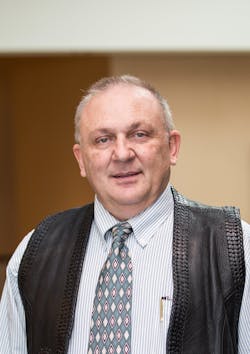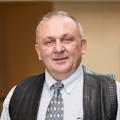
SEMICON West was, as usual, busy and a great venue to meet up with customers and see a lot of people in one place. However, the show has settled into a routine and there really was not much new to see—on the laser side, at least. Even the Solar venue has been sleepy for the past few years.
Amongst the vendors, I counted 2 "laser" companies, 5 laser "system" companies, 1 optics company, and zero laser job shops. I saw a few laser industry people at the show on Wednesday, usually the busiest day, but by and large the laser industry has been ignoring this venue for a few years now. The notable exception is 3D Micromac, a German laser system fabricator who not only had a booth, but hosted a brunch where they discussed their new dicing and solar cell manufacturing laser tools. They also announced a large investment into their US operation and the addition of not only an applications lab (in the Santa Clara area) with several laser tools, but also several application engineers to their US team.
In round numbers, the laser industry is somewhere around $9 billion annual revenue. Meanwhile, the semiconductor industry is close to $90 billion—or almost 10 times the size of the laser industry. Nevertheless, there is an undercurrent of excitement—not to mention a lot more people—at the SPIE Photonics West exhibition, which is held in the same convention center. There is no comparison between the two shows as to the dynamic one can feel at primarily the photonics events.
Why is this? I quote Kiyomi Monro of Biophotonic Solutions from an interview given in our sister publication, Laser Focus World, in 2014. He said, “I believe that photons are the new ‘fuel’ of the 21st century. Just as steam fueled the cotton gin and the industrial revolution, and petroleum fueled Ford’s Model T and the jet engine in the last century, photons are driving new efficiencies in materials processing, delivering astounding medical and materials science breakthroughs, being harvested to provide electrical energy, and lighting a communications infrastructure that is already leading to a transformative virtualization of our society.” He further predicts that in the near future, photonics companies will be among the largest (and most profitable) companies on earth.
I agree! No wonder the major photonics events are currently so strong and vibrant. There is always a real sense in the air that not only is the work being applied to many cool market areas, but that there is real potential for growth in both revenue and profit. Speaking of large and profitable—IPG also had a presence at SEMICON and if any company is currently positioned to fulfill the prophecies cited above, it is surely IPG.
In the meantime, the cost of neon continues to rise weekly.
I wish everyone a great summer and I hope to see many of you during the upcoming fall travel to conferences such as ICALEO, MDM- MN, Fabtech, etc.
I am always interested in hearing your thoughts concerning laser micromachining, the laser industry, comments on entrepreneurial endeavors, etc. AND … we are always looking for fresh, publishable material. Please feel free to contact me at [email protected].
About the Author
Ron Schaeffer
Ron Schaeffer, Ph.D., is a blogger and contributing editor, and a member of the Laser Focus World Editorial Advisory Board. He is an industry expert in the field of laser micromachining and was formerly Chief Executive Officer of PhotoMachining, Inc. He has been involved in laser manufacturing and materials processing for over 25 years, working in and starting small companies. He is an advisor and past member of the Board of Directors of the Laser Institute of America. He has a Ph.D. in Physical Chemistry from Lehigh University and did graduate work at the University of Paris. His book, Fundamentals of Laser Micromachining, is available from CRC Press.
